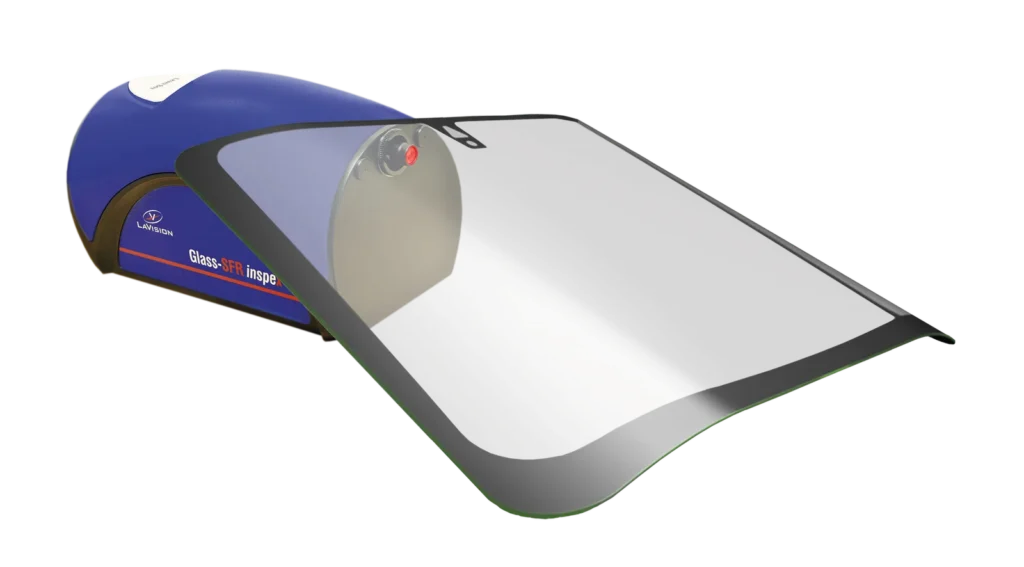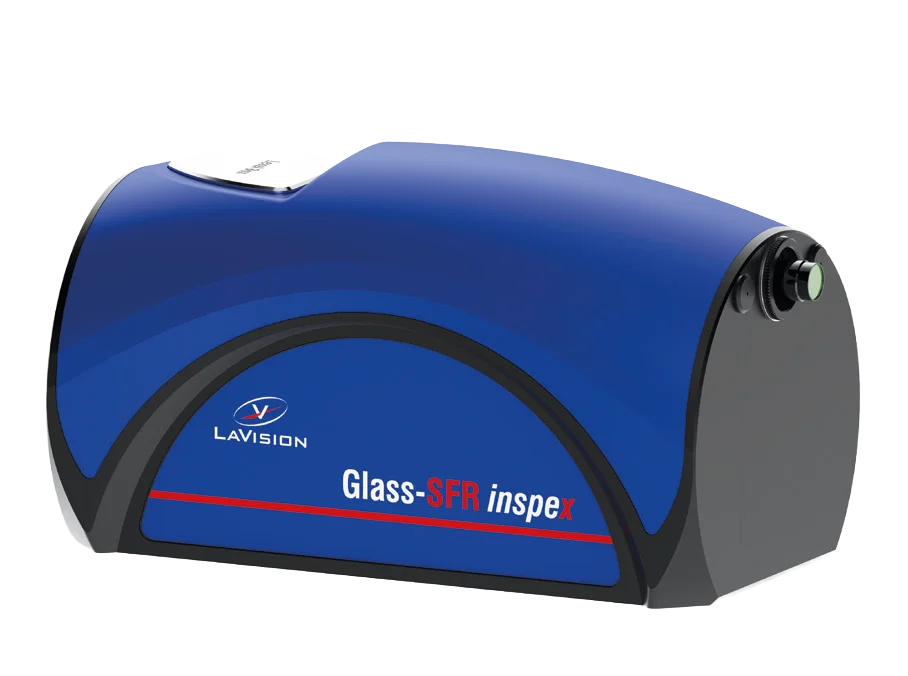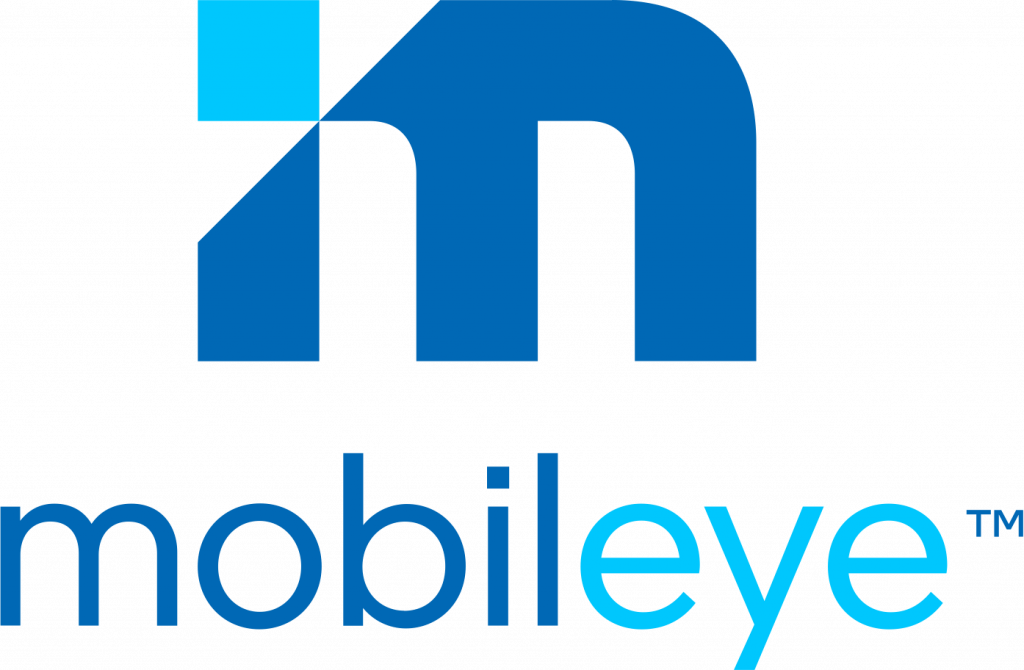See better and further. Measure more accurately. Drive more autonomously. Glass-SFR inspex - Windshield measurement for ADAS autonomous driving
Autonomous driving starts with the highest windscreen quality -
With Glass-SFR inspex, a free ride into a safe future
Recognize what others cannot see – decide before it becomes critical: When windscreens become a sensor surface, the need for quantitative, objective testing of their optical properties increases. ADAS systems with autonomous driving level 3 or higher require high windshield quality. This is because the image quality of camera-based ADAS systems is strongly influenced by the optical properties and interaction of the camera lens and windshield. Poor windshield quality leads to poor images from the ADAS systems: The reduction in contrast or a change in optical refractive power in the ADAS camera’s field of view of the vehicle glazing are the main influencing variables here, which must be considered independently of each other.
Why subjective visual inspections of windscreens are no longer sufficient
Modern windscreens are more than just protection against wind and weather: they are functional sensor carriers. Camera and radar systems in modern ADAS applications (from level 3) use the windshield as an optical channel. However, even the smallest distortions, changes in refractive power or loss of contrast in the ADAS camera’s field of vision can lead to interpretation errors in the AI. The methods used to date do not adequately capture these influences. Standardized optical testing under camera-realistic conditions is essential.
- Longer camera fields of view – ADAS cameras are increasingly focusing on object distances of over 60 meters.
- Growing regulations – Clear standards for the optical quality of windscreens are being developed.
- Every detail counts – Even the smallest distortions lead to a loss of contrast and can cause misinterpretations by the AI.
You are currently viewing a placeholder content from YouTube. To access the actual content, click the button below. Please note that doing so will share data with third-party providers.
More InformationInsufficient windshield quality does not allow ADAS to see all relevant objects clearly and makes the system “short-sighted”.
ADAS system to see all relevant information clearly into the distance.
A basic requirement for autonomous driving.
Why Glass-SFR inspex is crucial
for the future of autonomous driving
Examination of the complete image acquisition chain for safe driving:
Cause-effect analysis to find weak points in the image acquisition:
Optional use of camera adapters for flexible development:
camera adapter enables the flexible and precise mounting of original ADAS camera lenses. This is particularly valuable for vehicle and ADAS camera manufacturers as well as design and development service providers who accompany all phases of development and process monitoring.

Optical performance as the basis for autonomous driving
Precise 2D diopter analysis – determination of local distortions with maximum spatial resolution
The interaction of these measuring methods makes it possible to ensure the optical precision of vehicle glazing for advanced driver assistance systems.
Convincing added value for our industry partners
Advantages for ADAS experts
- Reliable fault diagnosis:
Early identification of visual deviations that could impair ADAS functionality. - Optimization of camera systems:
Ensuring consistently high image quality, which is required for precise image processing in ADAS systems. - Real-time validation of image quality:
Precise measurements under real conditions for error-free object detection and driver assistance. - Scalable test methods:
Integration of precise measurement methods in ADAS test processes in order to keep pace with the further development of the systems.
Advantages for car manufacturers
- Up to one year faster development:
Development times can be drastically reduced through early quality assurance. - Safeguarding ADAS image processing:
Faulty windscreens are identified before they are installed in vehicles. - Improved system reliability:
Fewer faults in image recognition thanks to visually perfect vehicle glazing. - Reproducible quality inspection:
Automated measuring sequences for consistent results in production.
Advantages for windshield & glass suppliers
- Up to one year faster development: Development times can be drastically reduced through early quality assurance.
- Safeguarding ADAS image processing: Faulty windscreens are identified before they are installed in vehicles.
- Flexible use in production: Can be used directly on the test stand or in the production line.
- Reproducible quality inspection: Automated measuring sequences for consistent results in production.
Conformity to standards and industrial integration
You are currently viewing a placeholder content from YouTube. To access the actual content, click the button below. Please note that doing so will share data with third-party providers.
More InformationPossible applications:
- R&D laboratory for validating new windshield geometries
- Quality test bench for series components
- Comparative studies of various suppliers
- System testing in ADAS test environments
Typical application contexts:
- Test stations in ADAS pre-development
- Approval testing of glass suppliers
- EOL test benches in series production
- Audit preparation for UNECE regulations
Looking to the future - with optical precision for ADAS
- Certified by leading ADAS manufacturers:
LaVision is one of the first companies to have its measurement systems for ADAS windscreens recognized. - Trusted partner of major automotive manufacturers:
Our systems are already in use in quality control at leading OEMs. - Guaranteed market protection: Glass-SFR inspex offers a precise, standardized and repeatable solution that protects automotive manufacturers, ADAS providers and glass producers alike.

Questions & answers about the Glass-SFR inspex
Why is the optical quality of the windshield so crucial for autonomous driving?
Which parameters are analyzed with the system?
The system measures the Spatial Frequency Response (SFR) or Modulation Transfer Function (MTF) to evaluate the optical quality of the windshield. In addition, a high-precision 2D diopter measurement can be carried out to detect local refractive power deviations. These characteristic values provide information about the contrast image, scattering and geometric distortions of the windshield.
What advantages does the LaVisions Glass-SFR inspex offer ADAS experts?
How do vehicle manufacturers actually benefit from integration?
What advantages does the LaVisions Glass-SFR inspex offer glass manufacturers?
What is the difference between MTF and SFR?
The SFR (Spatial Frequency Response) is a more general term for the modulation transfer function (MTF). The MTF is only determined by harmonic spatial frequencies, while the SFR includes these, but can also be obtained in other ways. The representation and interpretation of the MTF is identical to the SFR.
What distinguishes Glass-SFR inspex from other inspection systems?
Make sure you get individual expert advice!
Optimize the quality of your windscreen through quantitative, objective testing of its optical properties. Our experts will help you find the right solution for your requirements.

Glass-SFR inspex - The leading optical measuring system for measuring windscreens
Our measurement process is used worldwide by leading car manufacturers and has been certified by ADAS market leaders for autonomous driving.
The latest certification was carried out by mobileye.
